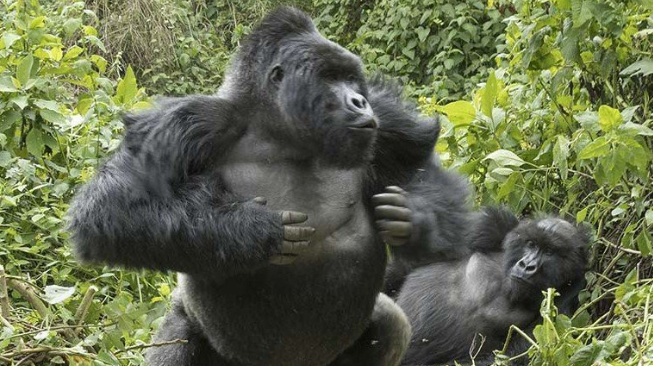How Do Gorillas Express Anger?
Understanding how gorillas express anger is not only fascinating but also essential for conservation efforts and improving interactions between humans and these incredible creatures. As our closest relatives in the animal kingdom, how they communicate their emotions offers insights into their behavior and social structures.
Body Language Signals
Gorillas are highly expressive animals, and their body language is a critical element in how they convey anger. Heightened emotions can manifest through posturing; for example, a gorilla may stand tall, puff out its chest, and engage in intense eye contact. When a gorilla feels threatened or angry, it might beat its chest or stomp its feet to assert dominance or to warn others to back off. These physical displays serve to communicate their feelings effectively within their troop and can deter possible conflicts before they escalate. These body languages have also inspired many artists, and many gorilla sculptures freeze the moment of this action, showing the gorilla’s sense of power.
Vocalizations in Anger Expression
Vocal sounds also play a significant role in a gorilla’s expression of anger. Gorillas are known to produce a range of vocalizations, such as grunts, roars, and barks, depending on the intensity of their emotions. An angry gorilla may emit deep, resonating roars to signal distress or dissatisfaction. These vocalizations can travel long distances, ensuring that others in the vicinity respond appropriately. Understanding these sounds can help researchers and caretakers better interpret gorilla emotions and foster healthier living conditions in captivity.
Facial Expressions and Gestures
Facial expressions are another vital component of how gorillas convey anger. A gorilla may furrow its brow, narrow its eyes, and exhibit a tense mouth when feeling agitated. Along with facial cues, specific gestures, such as lunging or pointing, can signal frustration. Observing these expressions helps capture the nuances of their emotional states, allowing caregivers and researchers to address potential conflicts and provide appropriate interventions, whether in the wild or in zoos.
Conclusion
Gorillas express anger through a combination of body language, vocalizations, and facial expressions, each adding a layer of meaning to their interactions. Understanding these signals is crucial for nurturing a better relationship between humans and gorillas, especially in conservation and caretaker scenarios. Encouraging further exploration into gorilla behavior not only enriches our knowledge but also enhances efforts to protect these magnificent animals. Dive deeper into this topic and discover more about the fascinating world of gorillas!

